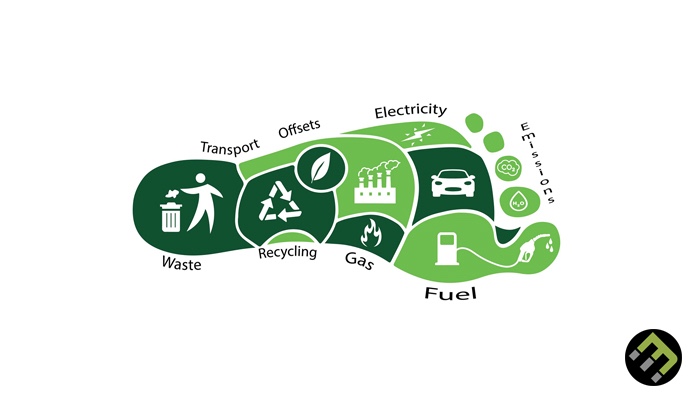Reducing your carbon footprint is an essential step towards creating a sustainable future for ourselves and future generations. The good news is that there are many ways to reduce your carbon footprint at home, and many of them are simple and easy to do. This comprehensive guide will take you from A to Z, covering everything you need to know about reducing your carbon footprint at home.
Ready to take action? One of the best things you can do is plant new trees! 1 is better than none, but the more you can plant the better. Visit Weaver Family Farms Nursery to buy trees right to your door
A is for Appliances: One of the biggest sources of energy consumption in our homes is our appliances. You can reduce your carbon footprint by choosing energy-efficient appliances. Look for appliances with the ENERGY STAR label, which means they meet specific energy efficiency criteria.

B is for Bulbs: Switching to LED light bulbs can significantly reduce your carbon footprint. LED bulbs use up to 80% less energy than traditional incandescent bulbs and last much longer.
C is for Composting: Composting is an excellent way to reduce food waste and create nutrient-rich soil for your garden. By composting, you can reduce your carbon footprint by keeping organic matter out of landfills, where it releases methane, a potent greenhouse gas.
D is for Drafts: Drafts in your home can lead to heat loss and energy waste. Seal up any drafts around doors and windows to keep your home more energy-efficient.
E is for Electronics: Electronics like computers, televisions, and game consoles consume energy even when they are not in use. Unplugging electronics when they are not in use can help reduce your energy consumption and carbon footprint.
F is for Food: The food we eat can have a significant impact on our carbon footprint. Eating a plant-based diet, buying locally grown food, and reducing food waste can all help to reduce your carbon footprint.
G is for Gardening: Gardening is an excellent way to reduce your carbon footprint. Planting trees, shrubs, and other plants helps to absorb carbon dioxide from the atmosphere.
H is for Heating: Heating your home can be a significant source of energy consumption. Consider upgrading to a more energy-efficient heating system, like a heat pump or geothermal system, to reduce your carbon footprint.
I is for Insulation: Proper insulation in your home can help to reduce heat loss and energy consumption. Insulate your walls, attic, and crawl spaces to keep your home more energy-efficient.
J is for Junk Mail: Junk mail is not only annoying, but it also contributes to deforestation and wastes energy. Reduce your carbon footprint by signing up for services like Catalog Choice, which helps you opt-out of unwanted mail.
K is for Kitchen: The kitchen is a significant source of energy consumption in our homes. You can reduce your carbon footprint in the kitchen by using energy-efficient appliances, cooking with a microwave or toaster oven instead of your stove or oven, and using reusable containers instead of plastic bags or wraps.
L is for Laundry: Doing laundry can also be a significant source of energy consumption. Use cold water for washing clothes, hang dry clothes when possible, and choose an energy-efficient washer and dryer.
M is for Meat: Eating meat has a significant carbon footprint. Consider reducing your meat consumption, choosing grass-fed or organic meat, or switching to a plant-based diet to reduce your carbon footprint.
N is for Natural Cleaning Products: Traditional cleaning products often contain harmful chemicals that can harm the environment and human health. You can reduce your carbon footprint and protect your health by using natural cleaning products like vinegar, baking soda, and lemon juice.
O is for Outdoors: Spending time outdoors can help us appreciate and connect with nature, which can inspire us to reduce our carbon footprint. Consider hiking, camping, or gardening
P is for Power Strips: Power strips can help reduce energy consumption by allowing you to turn off multiple electronics at once when they’re not in use. This can help reduce phantom energy loads and save you money on your energy bills.
Q is for Quality: Choosing high-quality, durable products can help reduce waste and your carbon footprint. Invest in products that will last longer and require less frequent replacement.
R is for Recycling: Recycling is an essential step in reducing our carbon footprint. Make sure you know what can and cannot be recycled in your area, and make an effort to recycle as much as possible.
S is for Solar: Installing solar panels on your home can help you generate clean energy and reduce your carbon footprint. There are also many incentives available for homeowners who choose to invest in solar energy.
T is for Transportation: Transportation is a significant source of carbon emissions. Consider walking, biking, or using public transportation instead of driving alone, and consider purchasing an electric or hybrid vehicle.
U is for Upcycling: Upcycling is the process of repurposing old or unused items into something new and useful. Upcycling can help reduce waste and save money.
V is for Vegetables: Growing your own vegetables can help reduce your carbon footprint by reducing the amount of energy needed to transport and package food.
W is for Water: Conserving water is an essential step in reducing your carbon footprint. Fix any leaks in your home, use low-flow showerheads and toilets, and reduce your water consumption in other ways.
X is for Xeriscaping: Xeriscaping is a landscaping technique that involves using plants that require little water. This can help reduce water consumption and the need for irrigation.
Y is for Yield: Yield refers to the amount of food or resources produced per unit of land. Choosing crops or products that have a high yield can help reduce the amount of land needed for agriculture and other activities, which in turn can help reduce deforestation and other negative impacts on the environment.
Z is for Zero Waste: Zero waste is the concept of producing no waste or minimizing waste to the greatest extent possible. This can be achieved through reducing consumption, reusing products, recycling, composting, and other strategies. Zero waste practices can help reduce the amount of waste that ends up in landfills or the environment, reducing greenhouse gas emissions and other negative impacts on the planet.
Ready to take action? One of the best things you can do is plant new trees! 1 is better than none, but the more you can plant the better. Visit Weaver Family Farms Nursery to buy trees right to your door
As an Amazon Associate we earn from qualifying purchases through some links in our articles.
